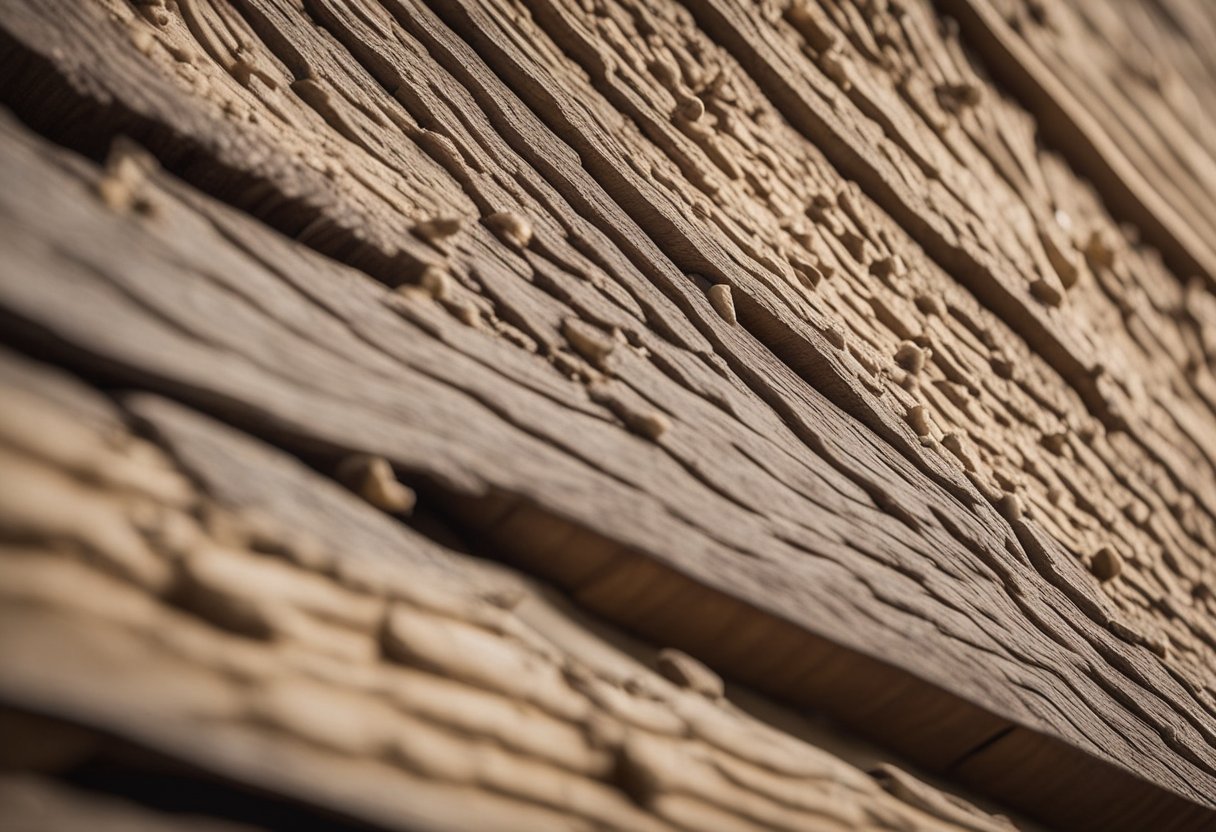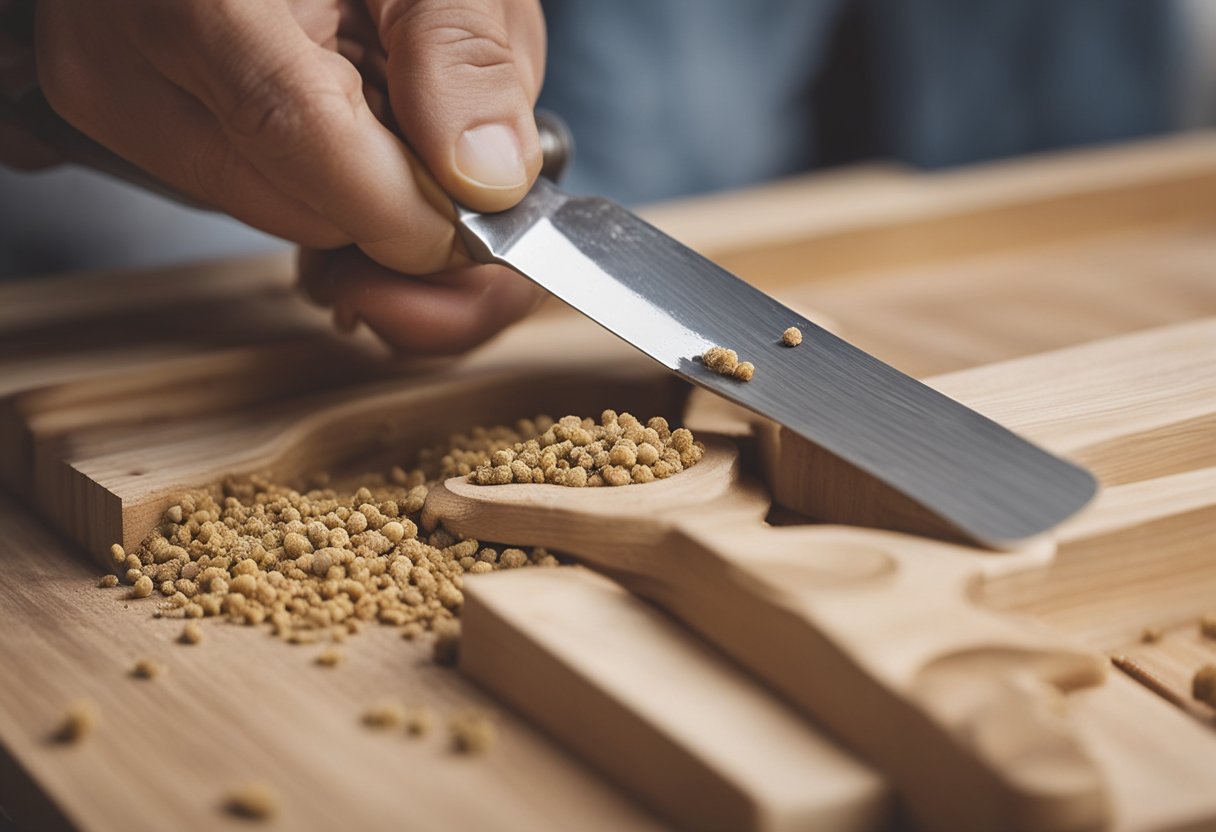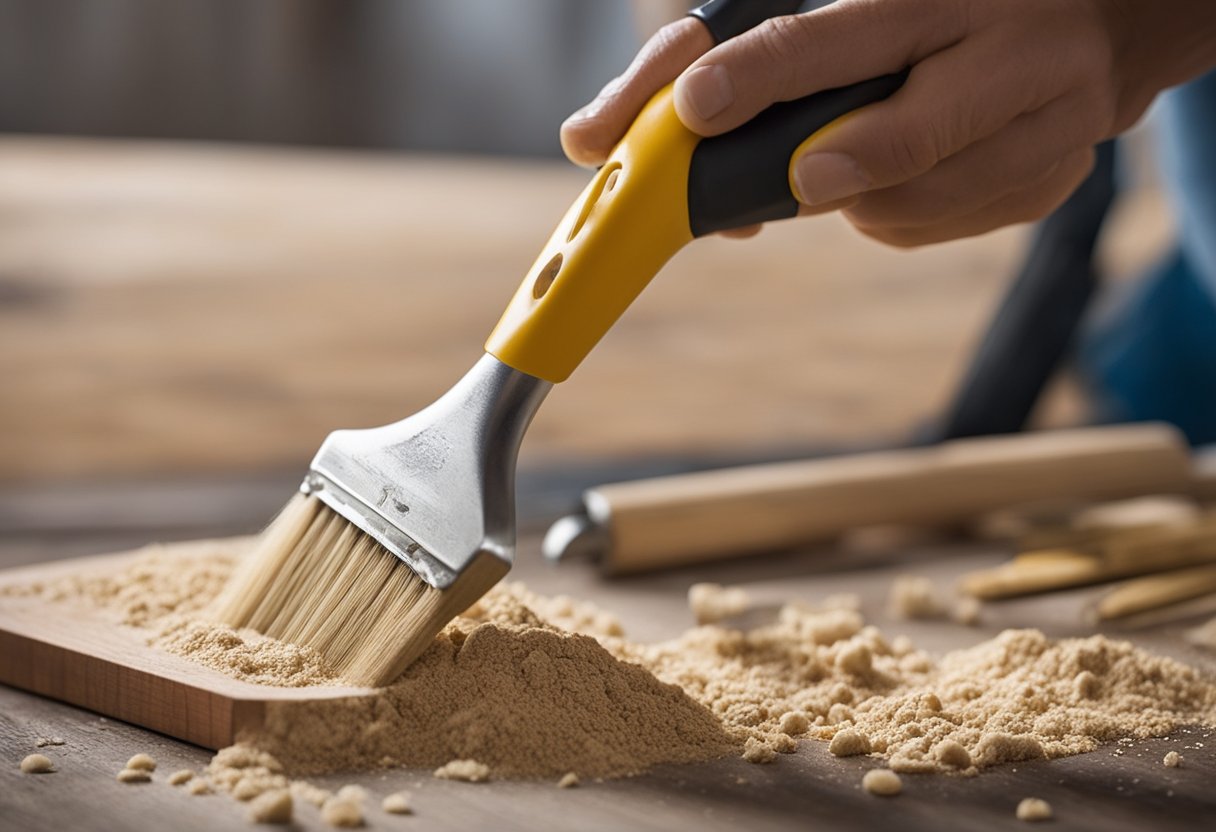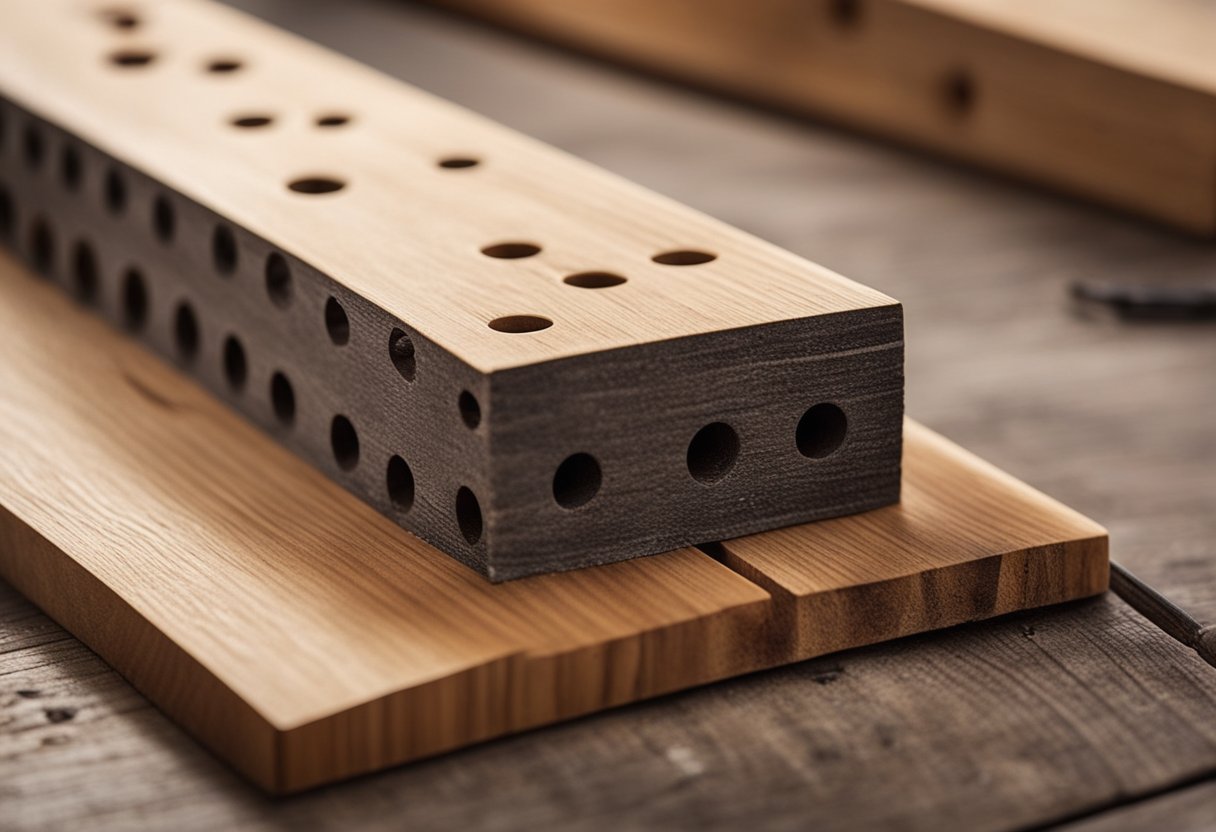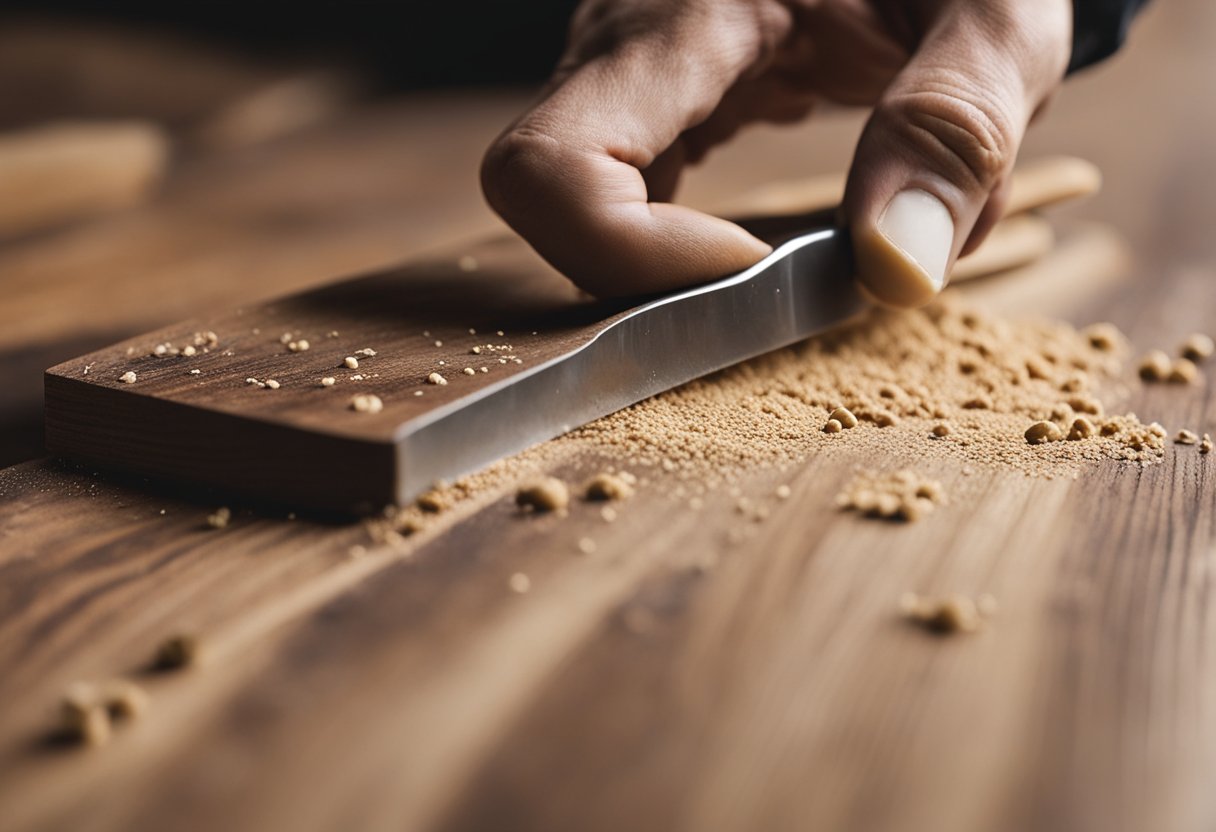If you’re a DIY enthusiast or a professional carpenter, you know how frustrating it can be to have a screw hole in your woodwork. Whether it’s because of a stripped screw, a misplaced screw, or any other reason, a hole in your woodwork can be an eyesore. But don’t worry, fixing screw holes in wood is a simple process that anyone can do with the right tools and materials.
Understanding the problem is crucial before you start fixing screw holes in wood. There are different types of screw holes, and each requires a different approach. For example, a stripped screw hole needs a different fix than a misplaced screw hole. In this article, I’ll take you through the step-by-step process of fixing various types of screw holes in wood, so you can have a beautiful and flawless woodwork once again.
Key Takeaways
- Understanding the problem is crucial before fixing screw holes in wood.
- The tools and materials needed for the repair depend on the type of screw hole.
- Proper preparation and following the step-by-step guide are essential for a successful repair.
Understanding the Problem
As a woodworker, I know how frustrating it can be to encounter screw holes that are stripped or loose. When screws are not properly installed or have been used repeatedly, the wood around the screw can become worn down and unable to hold the screw in place. This can lead to a variety of issues, including wobbly furniture, doors that don’t close properly, and other structural problems.
The most common cause of stripped screw holes is overtightening or using screws that are too large for the hole. When this happens, the threads of the screw can strip the wood fibers, leaving the hole too wide for the screw to hold. Another common cause of stripped screw holes is using screws in particle board or other weak materials that cannot support the weight of the screw.
Loose screws are another common issue that can cause problems with furniture and other structures. When screws become loose, they can no longer hold the wood together, leading to wobbling and other issues. Loose screws can be caused by a variety of factors, including changes in temperature and humidity, repeated use, and improper installation.
Fortunately, there are several ways to fix stripped or loose screw holes in wood. Depending on the severity of the damage and the type of wood being used, there are a variety of techniques that can be used to repair the hole and restore the strength of the wood. These techniques range from simple fixes like adding wood glue to the hole to more complex repairs like using metal inserts to reinforce the hole.
In the next section, I will discuss some of the most effective ways to fix stripped or loose screw holes in wood, including techniques for repairing holes in particle board and metal.
Tools and Materials Needed
When it comes to fixing screw holes in wood, having the right tools and materials is crucial. Here are some of the items you will need to get the job done:
Screwdriver
A screwdriver is a must-have tool for fixing stripped screw holes in wood. You will need a screwdriver that matches the size and type of screw you are working with. It’s also essential to have a screwdriver with a comfortable grip to prevent hand fatigue during the repair process.
Drill and Drill Bit
If you need to make new pilot holes or enlarge existing ones, a drill and drill bit will come in handy. Make sure to use a drill bit that is the same size as the screw you are using or slightly smaller. If the hole is too big, you may need to use a larger screw or fill the hole with a dowel.
Toothpicks or Wooden Golf Tees
If the screw hole is too big for the screw, you can fill it with toothpicks or wooden golf tees. Simply dip the toothpicks or golf tees in wood glue, insert them into the hole, and let the glue dry. Then, you can reinsert the screw into the hole.
Wood Filler or Auto Body Filler
If the screw hole is too damaged to be fixed with toothpicks or wooden golf tees, you can use wood filler or auto body filler. Simply apply the filler to the hole, let it dry, and then sand it down until it’s smooth. You can then reinsert the screw into the hole.
Longer Screws or Wider Screws
If the screw is not holding in the wood, you may need to use a longer screw or a wider screw. However, make sure the screw is not too long or too wide, as this can cause the wood to split.
Wood Dowels
If the screw hole is too damaged to be fixed with toothpicks or wooden golf tees, you can use wood dowels. Simply drill a hole into the wood, insert the dowel, and cut it to size. Then, you can drill a new pilot hole and insert the screw.
Wall Plugs or Plastic Anchors
If you are fixing a screw hole in drywall or plaster, you may need to use wall plugs or plastic anchors. These are designed to provide extra support and prevent the screw from pulling out of the wall.
Hammer and Chisel
If you need to remove a damaged screw or dowel, a hammer and chisel can be used to chip away at the wood around the hole. Just be careful not to damage the surrounding wood.
Threaded Metal Insert or Tap-and-Die
If you need to create a new threaded hole, you can use a threaded metal insert or a tap-and-die set. These tools are designed to create new threads in the wood, allowing you to insert a new screw.
Lubricant, Hardener, and Resin
If you are using wood filler or auto body filler, you may need to use a lubricant to help smooth out the filler. You may also need to use a hardener or resin to help the filler dry faster and harder.
Overall, having the right tools and materials is essential for fixing screw holes in wood. By following these tips, you can ensure that your repairs are strong and long-lasting.
Preparation Process
Before fixing screw holes in wood, it is important to properly prepare the surface to ensure a successful repair. Here are the steps I take to prepare the wood surface:
-
Assess the damage: First, I assess the damage to determine the best course of action. If the screw hole is stripped or too large, I may need to drill a new hole or use a wood anchor to secure the screw.
-
Gather tools and materials: Next, I gather the necessary tools and materials, including a drill, screwdriver, wood glue, hammer, drill bit, hinge screws, wood anchor, wall plugs, door hinge screws, pilot holes, chisel, wood pieces, woodworking hardener, and lubricant.
-
Clean the area: Before beginning the repair, I clean the area around the screw hole to remove any debris or dust. This ensures that the wood glue or filler will adhere properly to the surface.
-
Fill the hole: If the screw hole is too large, I fill it with a wood piece or wood filler. To do this, I apply a small amount of woodworking hardener to the wood piece or filler and insert it into the hole. Once the hardener has dried, I use a chisel to trim any excess wood.
-
Drill pilot holes: Before inserting new screws or hinge screws, I drill pilot holes to ensure that the screw will go in straight and prevent the wood from splitting. I choose a drill bit that is slightly smaller than the screw to make the pilot hole.
By properly preparing the surface, I ensure that the repair will be strong and long-lasting.
Step-by-Step Repair Guide
https://www.youtube.com/watch?v=q_qCods-DdY&embed=true
Fixing stripped screw holes in wood can be a simple and straightforward process. Here’s a step-by-step guide to help you repair your stripped screw holes with ease.
Step 1: Remove the Screw
The first step is to remove the screw from the stripped hole. Use a screwdriver to turn the screw counterclockwise until it comes out. If the screw is stuck, you can use pliers to grip the head of the screw and turn it.
Step 2: Fill the Hole
Once the screw is removed, use a toothpick or a wooden golf tee to fill the hole. Dip the toothpick or golf tee in wood glue and insert it into the hole. Make sure the toothpick or golf tee is snug in the hole. Allow the glue to dry for at least 30 minutes.
Step 3: Insert a Longer Screw
If the stripped screw hole is too large for a toothpick or golf tee, you may need to drill a new hole. Use a drill bit that is slightly smaller than the diameter of the screw and drill a new hole in the same location. Insert a longer screw into the new hole. The longer screw will bite into the fresh wood and provide a stronger hold.
Step 4: Use a Wood Dowel
If the hole is too large for a longer screw, you can use a wood dowel to fill the hole. Cut a small piece of wood dowel that is slightly larger than the hole. Apply wood glue to the dowel and insert it into the hole. Allow the glue to dry for at least 30 minutes. Once the glue is cured, you can use a chisel to trim the dowel flush with the surface of the wood. Drill a pilot hole in the center of the dowel and insert a screw.
Step 5: Use a Wall Plug
If you need to fix a stripped screw hole in a wall, you can use a wall plug. Drill a hole in the wall that is slightly smaller than the wall plug. Insert the wall plug into the hole and tap it in with a hammer. Insert a screw into the wall plug.
Step 6: Use a Plastic Anchor
If you need to fix a stripped screw hole in drywall, you can use a plastic anchor. Drill a hole in the drywall that is slightly smaller than the anchor. Insert the anchor into the hole and tap it in with a hammer. Insert a screw into the anchor.
By following these steps, you can fix stripped screw holes in wood with ease. Whether you use toothpicks, longer screws, wood dowels, wall plugs, or plastic anchors, you can restore the strength of your wood joint and ensure a secure hold for your screws.
Preventing Future Issues
To prevent future issues with stripped screw holes in wood, there are several things that can be done.
Firstly, using longer screws can help to provide a stronger bite and prevent the screw from becoming loose over time. It is important to note that the screw should not be too long, as this can cause damage to the wood.
Another option is to use dowels. This involves drilling out the stripped screw hole and inserting a dowel that is the same size as the hole. The dowel can then be glued in place and the screw can be inserted into the dowel. This provides a strong anchor for the screw and prevents it from becoming loose.
Pilot holes can also be used to prevent stripped screw holes. A pilot hole is a small hole that is drilled into the wood before the screw is inserted. This helps to guide the screw and prevent it from becoming stripped.
In addition, using wood anchors or wall plugs can be an effective way to prevent stripped screw holes. These are small plastic or metal anchors that are inserted into the wood before the screw is inserted. They provide additional strength and support for the screw.
Finally, using the right tools and techniques can also help to prevent stripped screw holes. This includes using the correct size and type of screwdriver, lubricating the screw with a bit of wax or soap, and using a hardener or resin to reinforce the wood around the screw hole.
By taking these steps, it is possible to prevent future issues with stripped screw holes in wood and ensure that your screws stay securely in place.
Frequently Asked Questions
https://www.youtube.com/watch?v=WfX_hAgFf3Y&embed=true
What is the best wood glue for filling screw holes?
The best wood glue for filling screw holes is a PVA (polyvinyl acetate) glue. It is strong, dries clear, and is easy to sand. I recommend using Titebond III Ultimate Wood Glue or Elmer’s Carpenter’s Wood Glue Max for this purpose.
How can I repair a stripped screw hole in a wood door frame?
To repair a stripped screw hole in a wood door frame, you can use wooden toothpicks or wooden dowels. First, remove the screw and clean out the hole. Then, dip the toothpicks or dowels in wood glue and insert them into the hole. Allow the glue to dry completely before reinserting the screw.
What is the Mr. Grip screw hole repair method?
The Mr. Grip screw hole repair method involves using a two-part epoxy putty to fill the stripped screw hole. First, clean out the hole and mix the two parts of the epoxy putty together. Then, apply the putty to the hole and shape it to fit the surrounding wood. Allow the putty to dry completely before redrilling the hole and reinserting the screw.
How do I fill screw holes in wood to redrill?
To fill screw holes in wood to redrill, you can use wooden dowels or wooden plugs. First, remove the screw and clean out the hole. Then, cut a wooden dowel or plug to fit the hole and insert it into the hole using wood glue. Allow the glue to dry completely before sanding the surface smooth and redrilling the hole.
What is the best way to make screw holes in wood disappear?
The best way to make screw holes in wood disappear is to use wood filler. First, clean out the hole and fill it with wood filler using a putty knife. Allow the filler to dry completely before sanding the surface smooth. If necessary, repeat the process until the hole is completely filled and smooth.
How can I fix a stripped screw hole in a wood cabinet?
To fix a stripped screw hole in a wood cabinet, you can use wooden toothpicks or wooden dowels. First, remove the screw and clean out the hole. Then, dip the toothpicks or dowels in wood glue and insert them into the hole. Allow the glue to dry completely before reinserting the screw. If the hole is still too loose, you can use the Mr. Grip screw hole repair method or replace the damaged wood.

Hi, I’m Sal Muller of Tooltrip.com. My DIY experience led me to understand essential power tools for home projects. Tooltrip.com guides enthusiasts and professionals in choosing right tools for any job. I provide concise top tool reviews for easier, efficient DIY.

